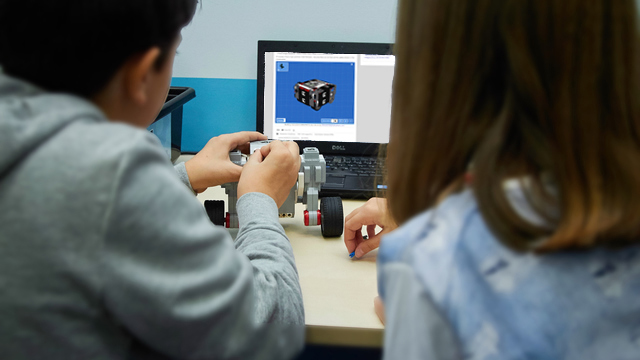We should point out that “duck walking” does not follow the black line but its edge. When the robot is duck walking, it turns to the black line when on white and vice versa. As a result, the robot is constantly compensating and performs a lot of unnecessary movements.

To access the full video please subscribe to FLLCasts.com
- #777
- 09 Mar 2018
In the case of proportional line following, we apply the following rule: the greater the distance between the line edge and the robot, the sharper the turn and vice versa. The value at which there is no turn (when the robot is on the edge) is called a setpoint. If the sensor is on “white”, then:
setpoint – sensor value < 0
and the robot will turn in one direction. The greater the difference, the sharper the turn.
If the sensor is on “black”, then:
setpoint – sensor value > 0
and the robot will turn in the other direction. Again, the greater the difference, the sharper the turn.
Relaxation coefficient
The difference between the setpoint and the sensor value is called an error and the corresponding robot movement - a response. The aim of the PLF algorithm is to have a proper response, minimizing the error. We use a coefficient to control how strongly the robot responds to the error. We multiply the error by the coefficient. The result is the response defined by the PLF algorithm. So the greater the coefficient is, the greater the response is. This coefficient is called a relaxation coefficient.
Courses and lessons with this Tutorial
This Tutorial is used in the following courses and lessons

Instructors Remote Training
If you are working with students and you want to introduce Robotics to your class or you want to mentor a FLL team, but you are insecure about your technical knowledge in the Robotics field, then this is the right place for you. Having in mind teachers' busy schedule, we have design two different schedules and added an option to design one just for you. FLLCasts's Mindstorms EV3 Robotics Online Training is the perfect match for any teacher.
After the completion of each task the participant has to upload his solution for verification.
- 183
- 280:11
- 156

Competition programming
In this episode, we introduce a LEGO Mindstorms EV3 version of competition robot construction. It is a modular construction, with medium motor for additional attachments and two light or colour sensors for orientating on the field.
- 7
- 0
- 8
- 3d_rotation 1